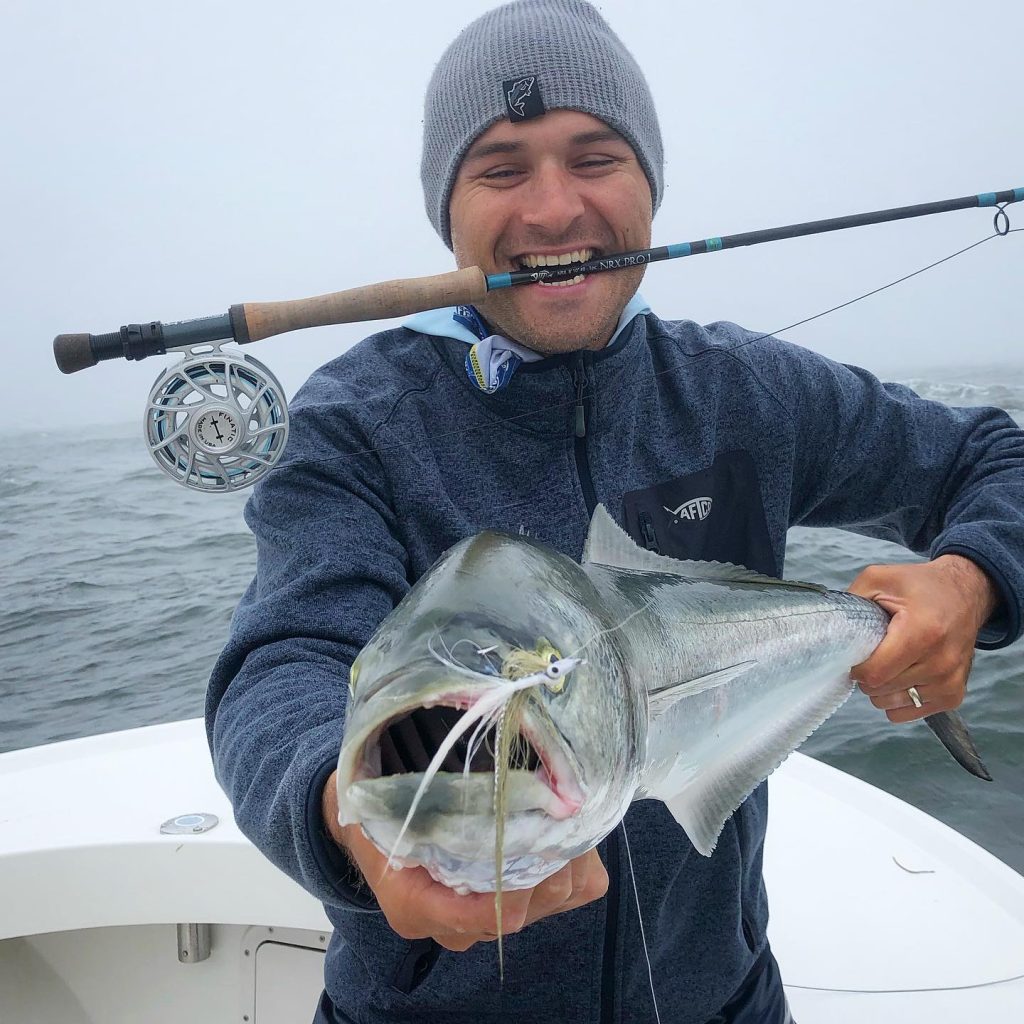Fly fishing for bluefish
The subject of this post is fly fishing for bluefish. Bluefish are voracious predator fish that swim and hunt in schools. They are almost always very aggressive and fairly easy to entice to bite. Some anglers chasing other species consider bluefish to be a nuisance, but nobody can dispute that they put up a terrific fight!
Bluefish, Pomatomus saltatrix, are the only member of that Pomatomus family. They are found in temperate and subtropical water throughout the work. Bluefish feed aggressively and fight very hard. They are edible, but not considered to be a top species to eat.
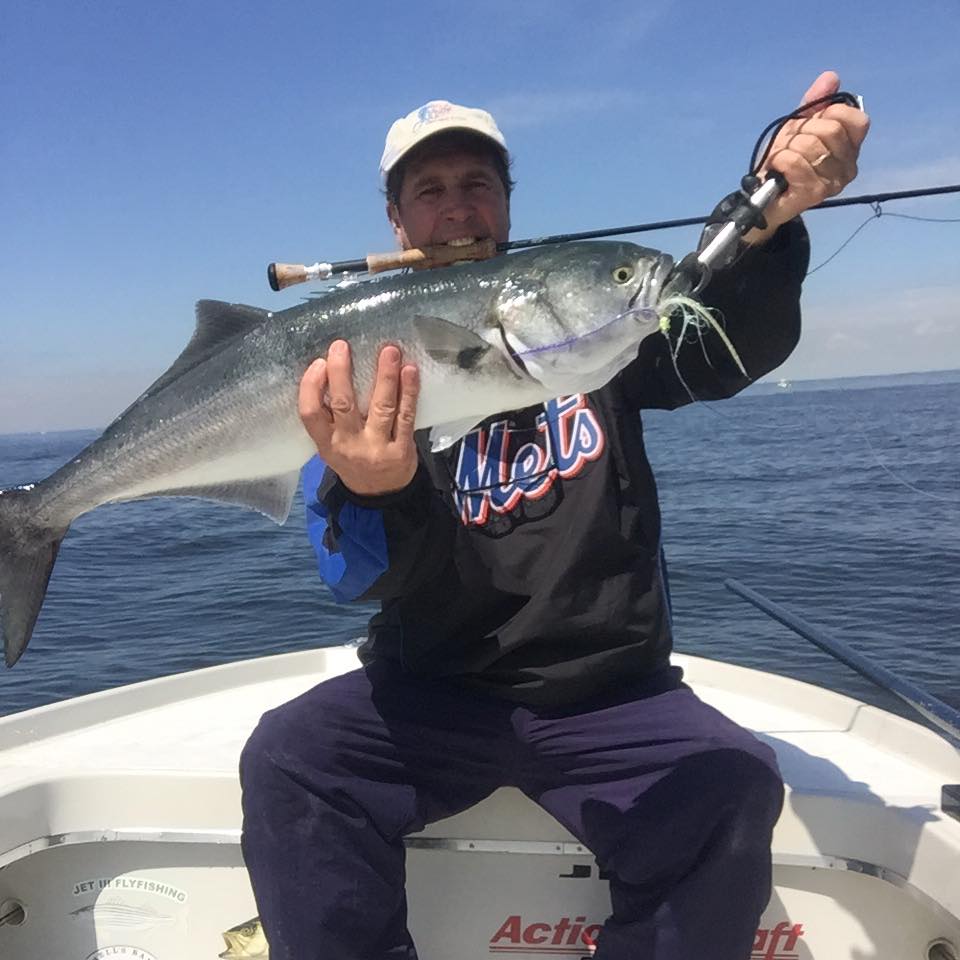
My name is Capt Jim Klopfer and I am a fishing guide in Sarasota, Florida. I grew up in Maryland, fishing for bluefish in Chesapeake Bay. The fish we get in Florida are smaller, averaging 2-5 pounds. However, they are great fun on light fly tackle. I will share some tips that I have learned over the years catching these hard-fighting fish.
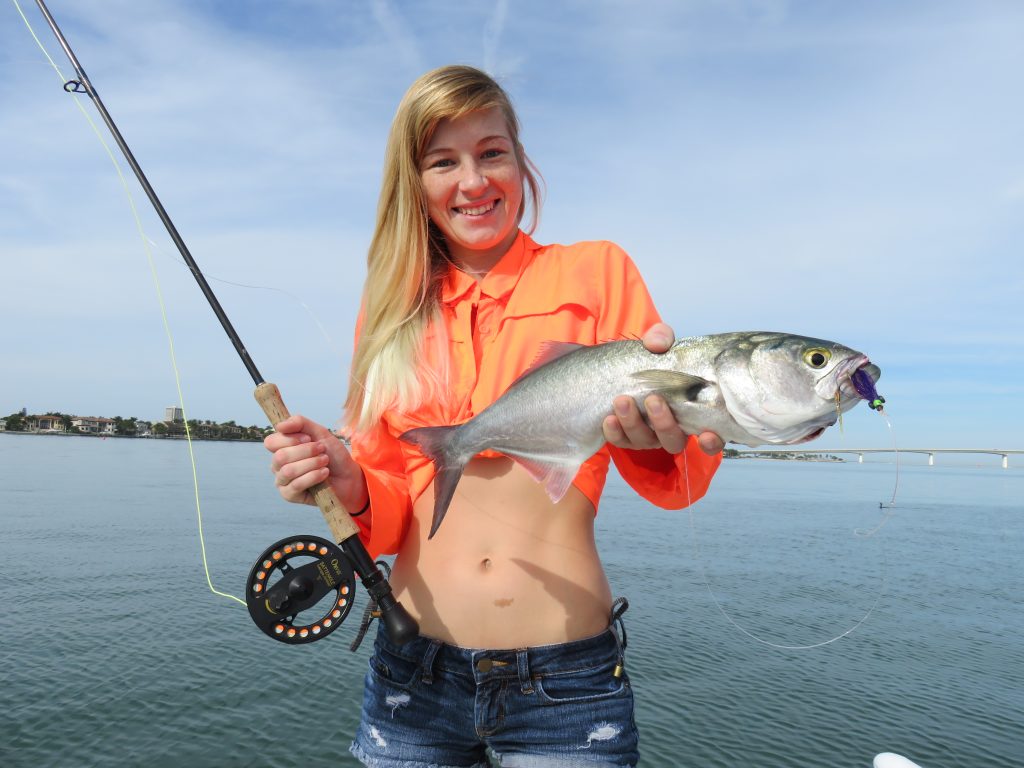
Fly fishing for bluefish
Unlike many other saltwater species, anglers fly fishing for bluefish have no problem getting them to take a fly. In most instances, finding bluefish equates to catching them. Bluefish school up in large numbers. That competition results in them being even more aggressive than they already are.
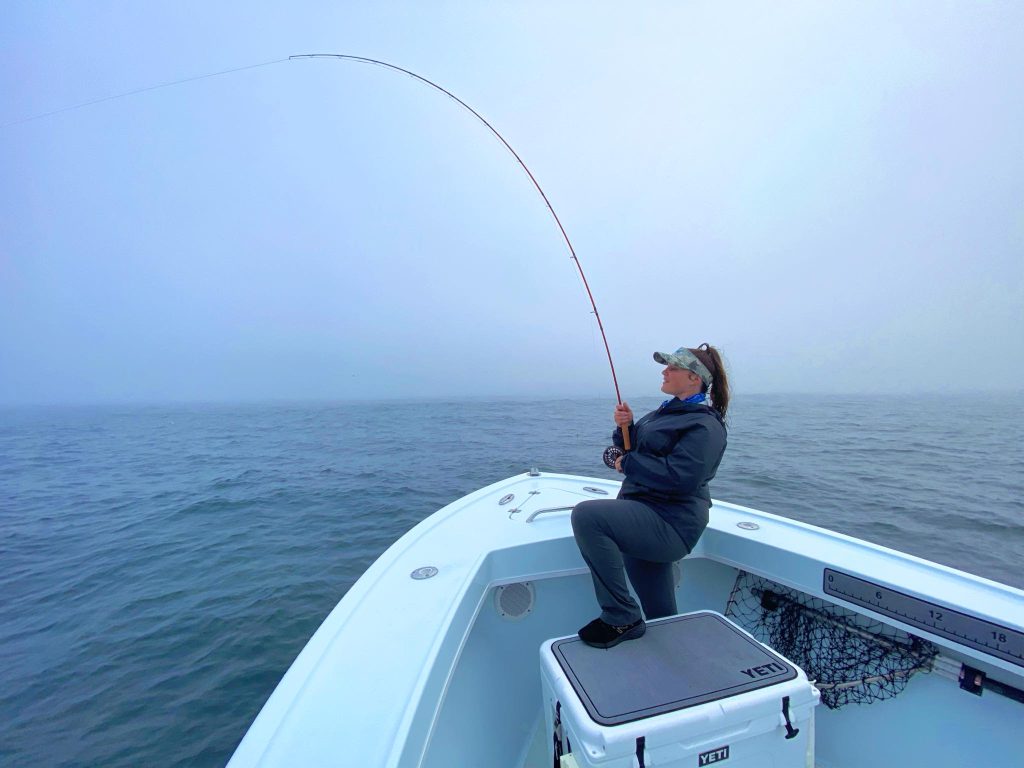
Bluefish are often seen feeding on the surface. They round up whatever bait fish are in the area, trapping them against the surface. This can be easily seen on a calm day. Diving birds are an indication as well. At times, a “slick” can even be seen (and smelled) on the surface after a feeding spree.
Anglers fly fishing for bluefish certainly catch them blind casting as well. This is often done in an area where they have been recently seen or caught. I often drift grass flats in 6′ to 10′ of water, blind casting for bluefish and other species. Inlets are top spots as well. Bluefish are a pelagic species, which results on them always being on the move. Successful anglers do not stay in one spot too long if the action is slow.
Fly fishing tackle for bluefish
The primary factor when choosing a rod and reel combination when fly fishing for bluefish is the size of the fish. Wind and fly size are secondary factors. In Florida where I fish, an 8wt is a good all round outfit as our fish rarely exceed 5 pounds. Anglers fishing where larger fish are present will do better with heavier tackle. A 10wt works well in most situations in the Northeast where the bluefish tend to run larger.
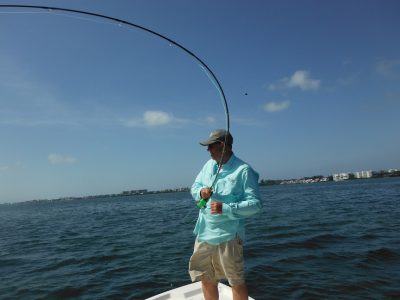
I personally use an intermediate sink tip line for the vast majority of my fly fishing, and bluefish are no exception. Even when fish are on the surface, anglers can fish on top simply by beginning the retrieve as soon as the fly lands. This line offers the versatility of fishing deeper when that is required. A floating line certainly works and is easier to pick up.
Leader selection is pretty basic as well. I use a simple two piece leader with a 4′ 50 lb butt section followed by 3′-4” of 30 lb leader. Die to the smaller fish I have, I usually just tie the fly to the 30 lb tippet. However, anglers fishing for larger bluefish will do better with a short piece of tie-able wire. If the bite is tough, 50-60 lb flourocarbon can be used.
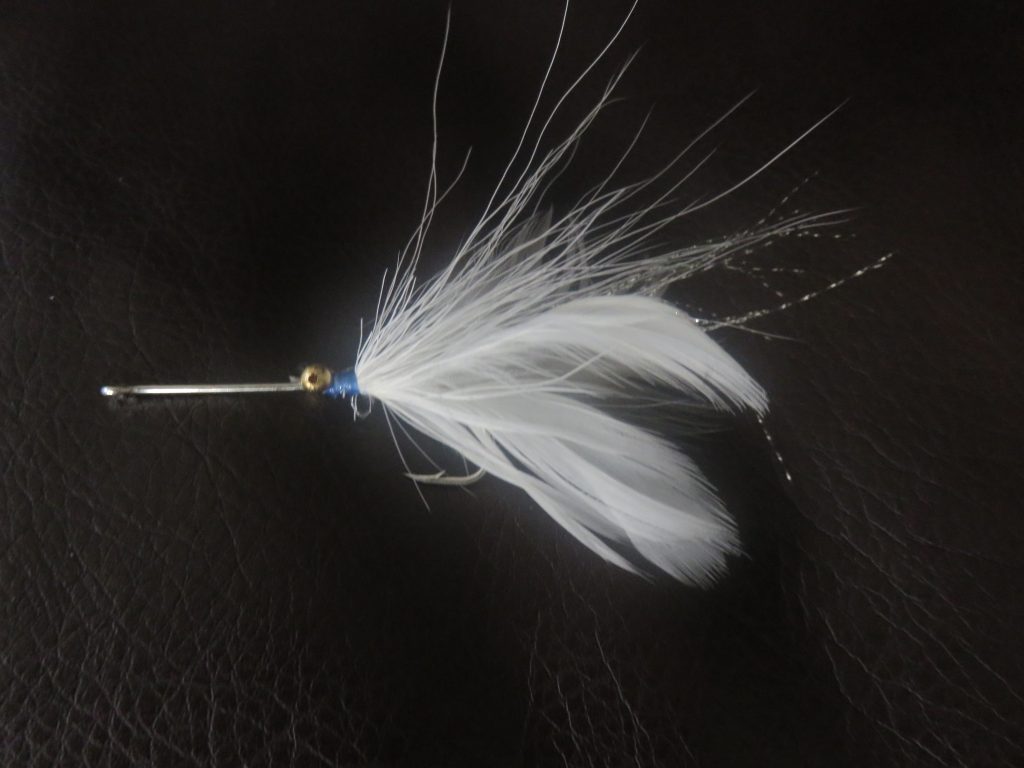
Fly selection is also pretty simple. Anglers do not need to spend a bunch of time tying extravagant flies for bluefish. In most cases, bluefish will hit almost any fly that is presented in front of them. Any simply bait fish pattern will produce. I use Clouser patterns and a D.T. Special variation (it reduces cut-offs better) in white most of the time. Poppers are fun when the surface bite is on.
Top techniques when fly fishing for bluefish
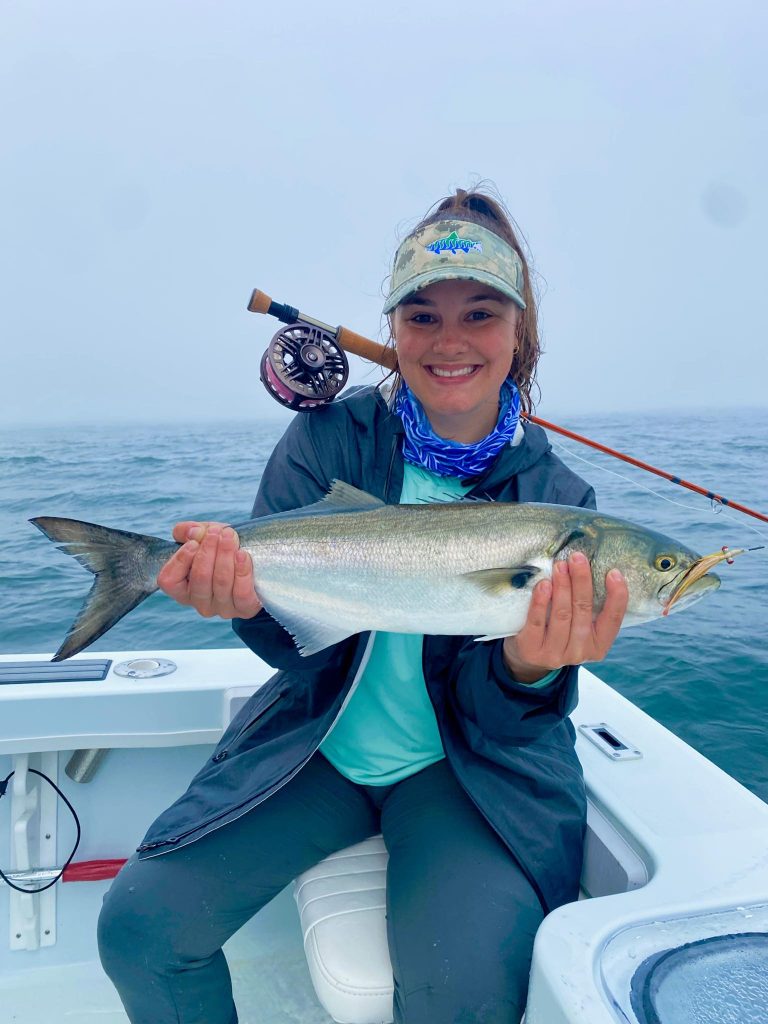
The two basic bluefish fishing techniques are blind casting and fishing for “breaking” fish. These are bluefish that are feeding visually on the surface. The techniques are similar, but are just a bit different and will be covered separately.
Stripping the fly and setting the hook
In both blind casting and fishing to breaking fish, the basic stripping and hook setting techniques are the same when fly fishing for bluefish. The only real difference is that when blind casting, the fly is allowed to sink to the desired depth.
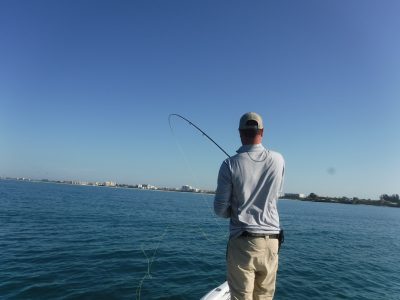
The fly is cast out and either allowed to sink or the retrieve starts right away. With the rod tip held low, near the surface, the fly is stripped in using hard, fast strips. Sometimes a pause in between strips will draw a strike, other times a fast, constant retrieve works best. Anglers should always experiment to see what the fish want that day.
When a bluefish takes the fly, anglers need to resist the urge to set the hook by raising the rod. Instead, the angler should pull the fly line sharply using the stripping hand. This is called a “strip set” and works much better when using streamers on bluefish and most other species as well. Once the line is tight, the anglers can smoothly raise the rod tip and fight the fish.
Smaller bluefish can be brought in by simply stripping the line in by hand. Larger fish will make a run and get “on the reel”. They can then be fought using the rod and reel, just keep those knuckles clear when it makes a run!
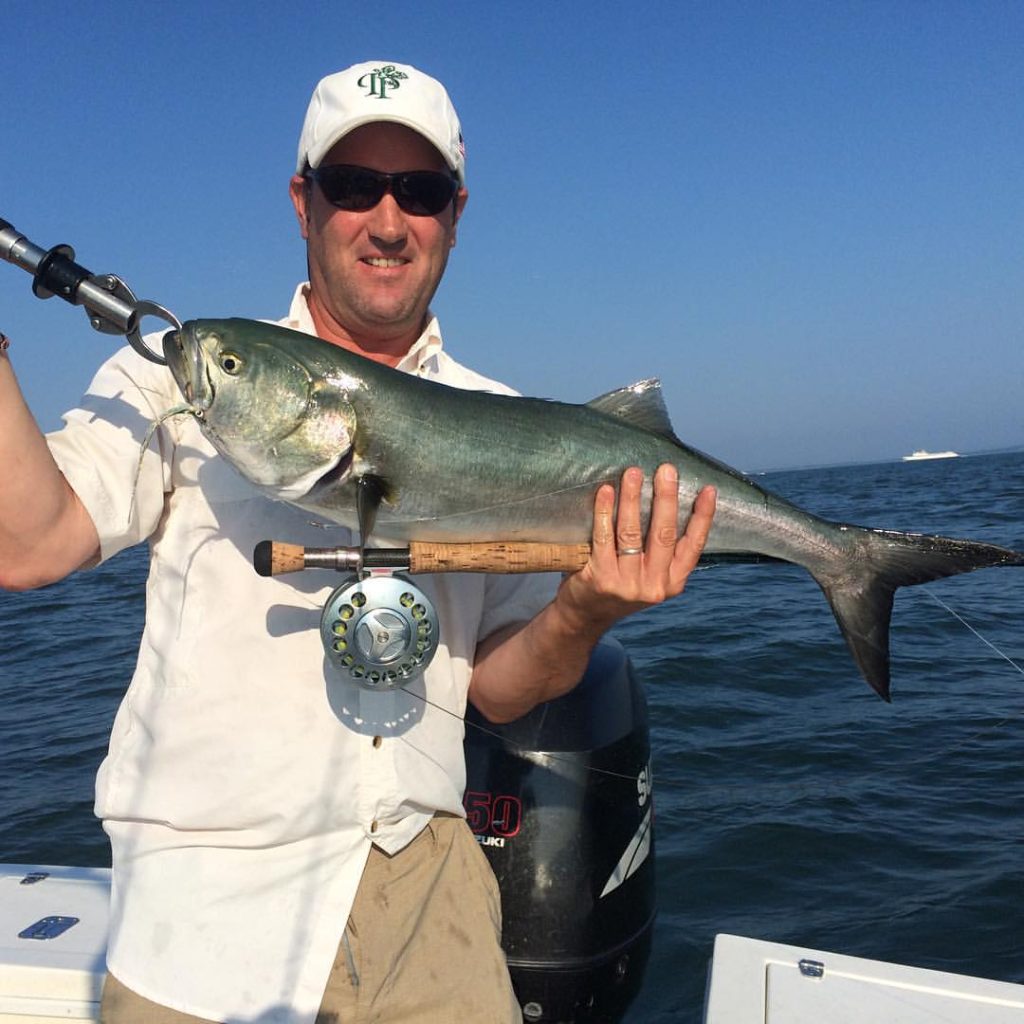
Fly fishing for bluefish on the surface
Fly fishing for bluefish when they are feeding on the surface is great sport! It is obvious where the fish are located and a properly presented fly is almost certain to be devoured. When fishing from a boat, it is best to place the boat up wind (or up-tide) and allow the boat to drift into the fish.
Whether fishing from shore or a boat, it is best to cast to the edge of the school of fish. This will help prevent cut-offs from other bluefish in the school. They will actually strike the line as it moves through them quickly. Basically, they are hitting anything that moves!
Anglers fly fishing for bluefish will encounter other species as well when scanning the surface for feeding fish. Striped bass, Spanish mackerel, jack crevalle, and false albacore are commonly found doing this. All will take the same flies, though the leader may need to be lighter, especially in clear water. False albacore in particular can be fussy.
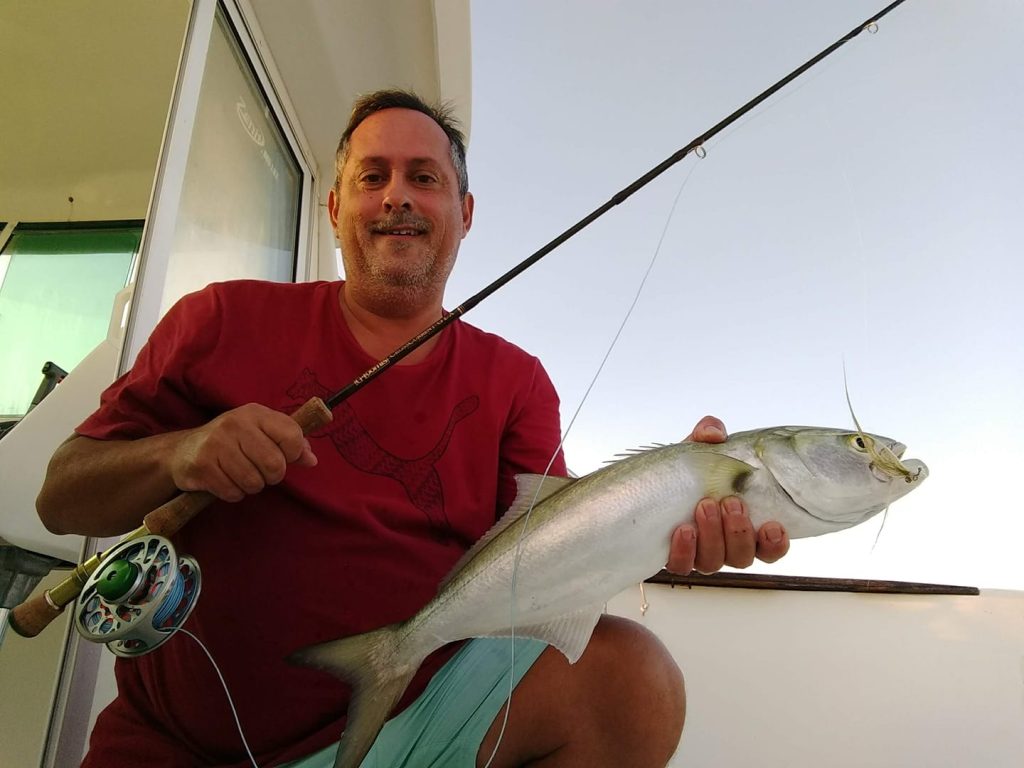
Fly fishing for bluefish from shore
Anglers fly fishing for bluefish can certainly achieve success without using a boat. In the Northeast, bluefish “blitzes” occur in the surf, and this is great fun! The same techniques apply, the biggest issue is line management in the wind and rough surf. A stripping basket is often used to combat this.
Jetties are excellent spots to fly fish for bluefish and other species. Inlets are natural routes that game fish will use. On the falling tide, inlets are used as feeding stations to ambush prey caught in the current. Anglers just need to be careful on the slippery rocks.
In conclusion, this article on fly fishing for bluefish will help anglers with a fly rod catch more of these terrific saltwater game fish!
